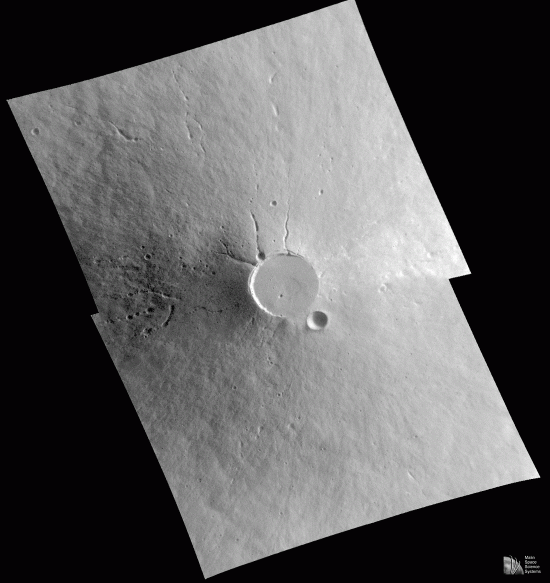Feb 27, 2017
Electricity is a pulling force.
Volcanoes on Earth are said to form when tectonic plates move over upwelling magma plumes. Conventional theories state that rising magma naturally erupts from the weakest fractures in the plates, building up lava deposits and creating steep-sided mountains.
No hypothetical plate boundaries exist on Mars, however, leaving planetary scientists to speculate about how Martian volcanoes once belched molten rock over several regions. The most familiar volcanic mount is probably Olympus Mons, said to be the largest volcano in the Solar System.
A recent press release from scientists from the Louisiana State University Geology and Geophysics department, the University of Rahuna in Sri Lanka, the SETI Institute, Georgia Institute of Technology, NASA Ames, and the Institut de Recherche en Astrophysique et Planétologie in France discusses another giant “volcano” on Mars, Elysium Mons. Using data provided by spectrographic equipment onboard the Mars Odyssey satellite, along with high resolution images from the Mars Reconnaissance Orbiter, they conclude that Elysium Mons is younger than the Tharsis Montes complex, the site of Olympus Mons.
Elysium Mons rises up to 16 kilometers and is located near the landing site of the Mars Science Laboratory, otherwise known as “Curiosity”, currently rolling through Gale Crater on the edge of the vast northern plains. Gale crater was selected for Curiosity’s landing site because of a central formation known as Aeolis Mons, which appears to be a layered deposit over 5500 meters high that was subsequently eroded by wind.
Geochemical changes and “crater counting” suggest to the research group that there is “unusual chemistry” in regolith deposits surrounding Elysium. As a member of the team said:
“Most of the volcanic features we look at on Mars are in the range of 3-4 billion years old. There are some patches of lava flows on Elysium that we estimate to be 3-4 million years old, so three orders of magnitude younger. In geologic timescales, 3 million years ago is like yesterday.”
Information provided by the Mars Reconnaissance Orbiter indicates to Electric Universe advocates that those ideas about lava flows should be permanently discounted. The common practice of using Earth geology to explain Martian areology causes researchers to misconstrue what they see when they examine data about Mars and its surface features.
In previous Picture of the Day articles about Martian volcanoes, it was pointed out that the shapes of the escarpments and the surrounding topography indicates that they could have been made by enormous plasma discharges. The force of the electric current raised giant mounds and carved out their distinctive calderas.
As physicist Wal Thornhill wrote about the Olympus Mons structure:
“…Olympus Mons itself is not a volcano but one of the largest anodic electrical scars yet discovered in the solar system. Such high mountains are formed by gargantuan electrical forces.”
When electricity encounters a solid body, like a planet, the current pulls charged material from where it makes contact. Neutral dust and stones can also be pulled along with the ionized particles. Craters formed by electric arcs are most often circular because electromagnetic forces cause them to maintain right angles to the surface. Rather than impacting the surface, electric arcs are stimulated by charged “leader strokes” that descend from above, attracting oppositely charged secondary strokes.
Since two or more filaments rotate around the arc axis, it can behave like a drill, excavating steep side walls and “pinching” a rolled rim. Often, the filaments will leave behind a central peak. Minerals in the crater will be electrically heated, scorched, and melted. There will be a lack of blast debris, such as from a meteor strike, because such debris is lifted out of the environment and accelerated away.
An electrical interpretation directly explains the nature of Martian topography. Electromagnetic forces between Birkeland currents constrained to a surface forces them into alignment. Ionic winds lift material and carry it along in the direction of the charge flow. Where a discharge channel bifurcates, the branches tend to remain parallel to each other and may rejoin.
A positively charged surface will be melted, while the electromagnetic forces within the arc might cause the surface to form a “lightning blister,” called a fulgamite. Elysium Mons demonstrates the results of such a discharge. Its caldera is circular, with chains of craters extending into the discharge zone. That effect is clearly seen in the image at the top of the page. It is important to remember that the three large channels seen in the image are not flowing out of the caldera but are flowing in.
Stephen Smith













